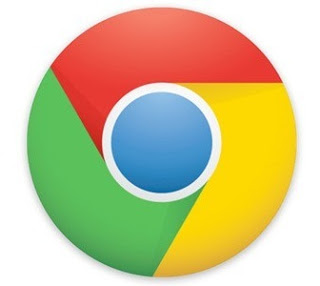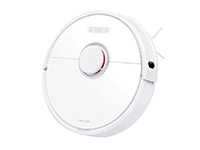The 10 Best Printers of 2016
Picking the right printer can be tough, with so many features to choose from, and individual printers with almost any possible combination of those variations available. Here are some pointers to help you find both the right category of printer and the right model within that type, along with our top-rated reviews.
What Type of Printer Do You Need?
The three most useful ways to categorize printers are by purpose (general or special), intended use (home or office), and technology. Define your needs by all three categories, and you're well on your way to finding the right printer.
Most printers, including most inkjets that manufacturers market as photo printer, are general-purpose models, meant for printing text, graphics, and photos. Special-purpose printers include portable printers, dedicated and near-dedicated photo printers, and label printers. (Even among specialty printers, 3D printers are a special case, and beyond the scope of this discussion.) If you're looking for a model to print, say, photos, consider whether you want to print only photos or want a printer that can also produce other kinds of output.
General-purpose printers tend to focus on photos if they're intended for home use or on text if they're intended for the office. Many multifunction printers (MFPs) are meant for the dual role of home and office printer (particularly for home offices), but generally favor one role over the other. Consider how you plan to use the printer, and pick one designed for that role.
The two most common technologies, laser and inkjet, increasingly overlap in capabilities, but there are still differences. The most important are that nearly all lasers (and laser-class models, such as solid ink and LED-based printers) print higher-quality text than nearly any inkjet, and almost any inkjet prints higher-quality photos than the overwhelming majority of lasers. Ask yourself whether text or photos are more important, and pick a technology accordingly.
Do You Need a Single-Function Printer or an MFP?
For general-purpose printing, additional capability means choosing an MFP, also known as an all-in-one or AIO. Those other functions include some combination of scanning, copying, and faxing from your PC, standalone faxing, and scanning to email. Office printers also typically add an automatic document feeder (ADF) to scan, copy, and/or fax multipage documents and legal-size pages. Some ADFs can handle two-sided documents, either by scanning one side, flipping the page over, and scanning the other side, or employing two sensors to scan both sides of the page on a single pass.
Some MFPs offer additional printing options as well. Web-enabled printers, both home and office models, can connect directly to the Internet via Wi-Fi to access and print out selected content without needing to work through a computer. Many Wi-Fi-enabled MFPs let you print documents and images from handheld devices. Some models let you email documents to the printer, which will then print them out.
Do You Need to Print in Color?
For a home printer, you probably need color, but for an office model, if you never print anything except for documents, there's no reason to spend money on color output. Keep in mind, however, that many color lasers can print at high enough quality to make your own advertising handouts and trifold brochures, which could save you money compared with printing small quantities at your local print shop.
How Much Space Do You Have for Your Printer?
Be sure to look into the printer's size. Even some home models can be uncomfortably large to share a desk with, and even a printer with a small footprint can be tall enough to feel like it's towering over you. At the other extreme, we're seeing a growing number of compact versions that can fit in tight spaces in apartments, home offices, and dorm rooms.
How Will You Connect?
In addition to a USB port, most office printers and an increasing number of home printers include Ethernet ports, so you can share the printer easily on a network. Many also include Wi-Fi capability. Even if they don't, if you have a wireless access point on your network, you can print wirelessly to any printer on that network, whether the printer itself offers a wireless connection or not. Printers that support Wi-Fi Direct (or its equivalent) can connect directly to most Wi-Fi-enabled devices, even if your computer or handheld isn't designed to support Wi-Fi Direct. We're also seeing printers that can connect to and print from a mobile device via near-field communication (NFC) by merely tapping the phone or tablet to a particular spot on the printer.
What Level of Output Quality Do You Need?
Printers vary significantly in output quality. Check out text, graphics, and photos separately, since high quality for one kind of output doesn't necessarily mean high quality for the others. Read reviews for the details.
How About Speed?
If almost everything you print is one or two pages, you probably don't need a fast printer. If you output a lot of longer documents, speed is more important, which means you probably want a laser printer. As a rule, laser printers will be close to their claimed speeds for text documents, which don't need much processing time. Inkjets often claim faster speeds than more expensive lasers, but usually don't live up to these claims. Inkjet printers have been getting faster, however, and a few recent high-end models can hold their own speed-wise against comparably priced lasers.
How Much Will You Print?
If you print only a few pages a day, you don't have to worry about how much a printer is designed to print, as defined by its recommended (not maximum) monthly duty cycle. If you print enough for the duty cycle to matter, however, don't buy a printer that doesn't include that information in its specifications. Figure out how much you print by how often you buy paper and in what amounts. Then pick a printer designed to print at least that much.
Also consider minimum and maximum paper size and whether you need a duplexer to print on both sides of the page. For input capacity, a useful rule of thumb is to get enough capacity so you should need to add paper no more than once a week.
How Much Will It All Cost?
Finally, be sure to consider the total cost of ownership. Most manufacturers will tell you the cost per page, and many give a cost per photo. To get the total cost of ownership, calculate the cost per year for each kind of output (monochrome, color document, photo) by multiplying the cost per page by the number of those pages you'll print each year. Add these amounts to get the total cost per year. Then multiply that by the number of years you expect to own the printer, and add the initial cost of the printer. Compare the total cost of ownership figures between printers to find out which model will be least expensive in the long run.
For a head start on finding the right printer for your needs, check out our top picks below, as well as our favorite wireless printers, and our roundup of the best printers for Macs.
FEATURED IN THIS ROUNDUP
HP Color LaserJet Enterprise M553dn

The HP Color LaserJet Enterprise M553dn is fast, low-priced, and has output quality good enough to let you print your own marketing materials.
Brother MFC-J5720DW

The Brother MFC-J5720DW inkjet multifunction printer delivers decent speed and output quality. More importantly, it offers a low running cost and has the ability to print at up to 11 by 17 inches.
Brother PocketJet 7 PJ723-BK

For convenient printing on the go, the Brother PocketJet 7 PJ723-BK thermal printer offers maximum portability and high-quality output, particularly for text.
Canon imageClass LBP151dw

The Canon ImageClass LBP151dw is a speedy, budget mono laser printer with above-average text, and is a good fit for a micro or home office.
Canon imageClass MF227dw

The Canon imageClass MF227dw monochrome laser multifunction printer is an excellent choice as a moderate-use shared printer in a micro office.
Canon Pixma MG5720 Wireless Inkjet All-in-One

The Canon Pixma MG5720 Wireless Inkjet All-in-One delivers better output quality than most inkjet multifunction printers, making it ideal for home use or as a light-duty personal printer.
Dell Color Cloud Multifunction Printer H625cdw Editors' Choice

The Dell Color Cloud Multifunction Printer H625cdw offers excellent value in a small-office color laser multifunction printer, with very good graphics quality, and multiple connectivity choices, including easy printing from and scanning to cloud storage sites.
Epson WorkForce Pro WF-6590

The Epson WorkForce Pro WF-6590's speed, full feature set, and low running costs make it a standout choice as a small-office color inkjet MFP.
HP Color LaserJet Pro M252dw

The HP Color LaserJet Pro M252dw color laser printer is a great fit for personal or light-duty shared use, with fast speed, high-quality output, network connectivity, and support for mobile printing.
HP PageWide Pro 552dw Printer

The HP PageWide Pro 552dw Printer uses inkjet technology, but competes directly with lasers designed for small to midsize offices. It delivers excellent speed, ample paper capacity, and laser-quality text.







































